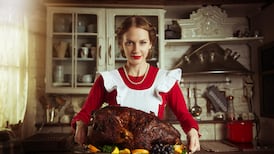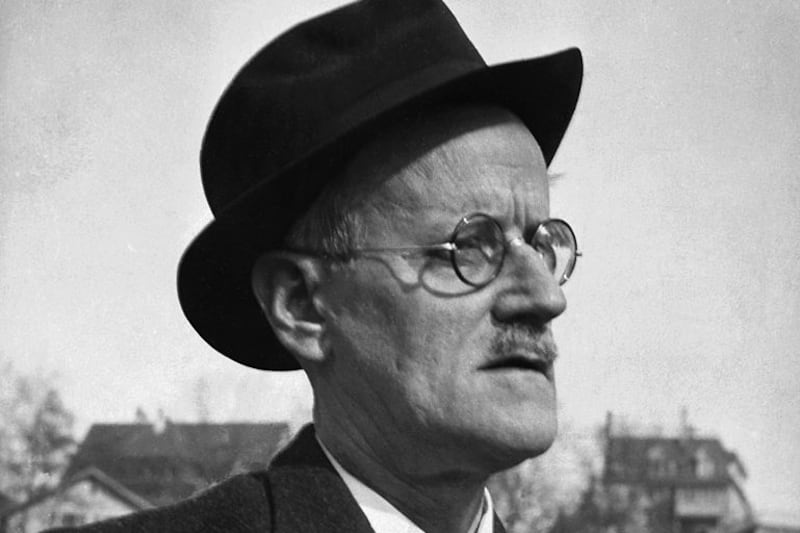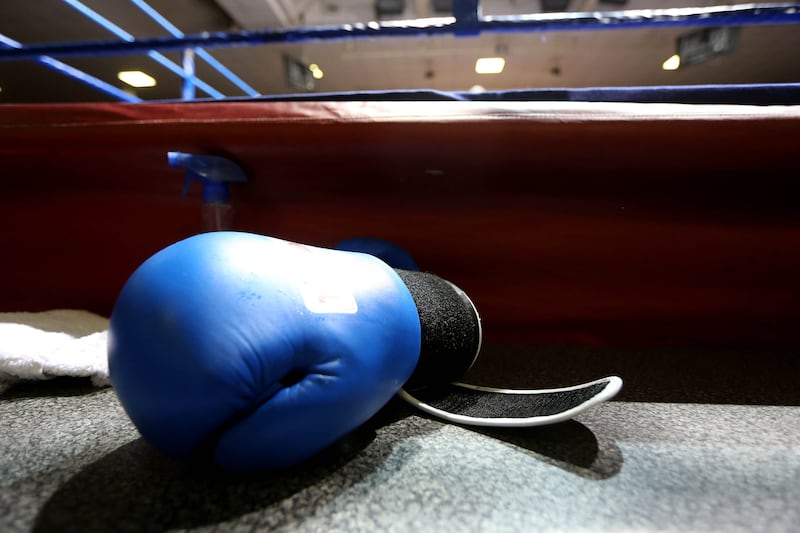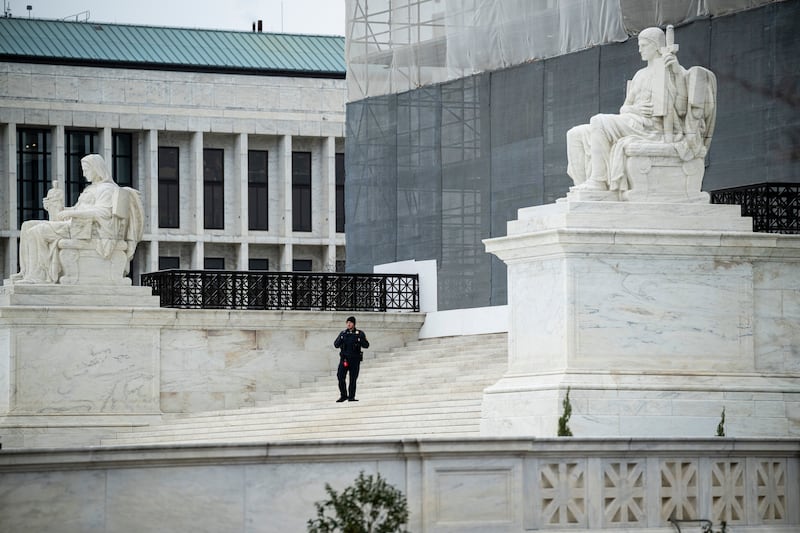There’s a grim humour to Eavaun Carmody’s text message after our interview about her life as an unusual Irish beef producer. She signs herself off as “Demented Farmer”. Carmody needed a sense of humour to navigate the Irish beef scene when she started out as a greenhorn. In the six years since she began farming she has been bullied, laughed at, dismissed as “the blonde down from the city with more money than sense” and told several times what she was trying to do was impossible.
But now she's getting paid the highest price for beef in Ireland. She has just nailed down a lucrative contract in Hong Kong and Macao for Killenure Gourmet Dexter Beef. And she's not phased by the Eat-Lancet Commission on Food, Planet, Health study that recommended we eat 90 per cent less red meat. Carmody's beef project could provide a direction sign at a crossroads moment for Irish beef. "I'm an awful stone in people's shoes," she says, "but a message of hope for farmers."
There haven’t been many of those in the past 10 days. Like a red rag to a bull, the study sent the Irish farm lobby into a rage. In the middle of Veganuary it set its sights clearly on red meat as a major cause of climate change. “Meat is murder”, Morrissey once sang. The Eat-Lance study suggests that, from a climate point of view, meat is madness.
A generational shift is already under way. Just one in five millennials in the United States have ever eaten a Big Mac
"Intensive meat production is on an unstoppable trajectory comprising the single greatest contributor to climate change," the report said. "Industry too has lost its way, with commercial and political interests having far too much influence with human health and our planet suffering the consequences."
As RTÉ geared up for another season of Operation Transformation we needed nothing less than a "Great Food Transformation", the study said. Win-win diets of healthy food "from biodiversity-enhancing food production systems" could provide a healthy diet to a population of nine billion people.
As a country whose biggest industry is agriculture and whose agriculture scene is dominated by milk and meat, the spotlight is firmly fixed on how we farm. Emissions from our agricultural sector are a third of our greenhouse gas emissions, the highest proportion in Europe. Yet we are growing our dairy herd in a headlong rush into the lucrative global dairy market. We risk a lose-lose scenario where diets and appetites will change dramatically and we continue working with the old model.
A generational shift is already under way. The fast-food chain McDonald’s revealed two years ago that just one in five millennials in the United States have ever eaten a Big Mac. Minister for Agriculture Michael Creed said recently that “at best” we can hope to flatline agriculture emissions, rather than reverse them.
Outnumbered by cows
Our record on climate change has put us into the worst-in-Europe category. And if we are a laggard as a country then our farming sector is our laggiest part. The Environmental Protection Agency noted that last year electricity generation cut its carbon intensity by 9 per cent, bringing it to its lowest-ever rate of carbon per kilowatt of power. In the agriculture sector, emissions went up by almost 3 per cent thanks to the growth in the number of dairy cows.
We are outnumbered by cows, heading towards having two for every human on the island. Since the lifting of the European Union milk quota we have added more than 400,000 cows to the national herd. It’s stretching resources to the limit. Last year we ran out of grass at the height of the growing season after an icy spring melted into a hot drought summer.
The argument that Ireland is the best little country in the world to do beef and dairy has long been used to ringfence our agricultural emissions. We are a damp, temperate island where grass grows 10 months of the year, the argument goes. Ireland should be lauded as the beef and dairy pasture for people in parts of the world where they don’t have that resource. We should be the poster boy, not the whipping boy.
As the money of the commodity markets flows out of beef and into milk, butter and whey, do we really want to turn Ireland into one large dairy prairie?
There is truth in this position, but the new normal of extreme weather may test it to breaking point. And as the money of the commodity markets flows out of beef and into milk, butter and whey, do we really want to turn the country into one large dairy prairie?
Juliana Adelman, a Dublin City University historian, has looked at how we got here through the business of export-led farming. The system began in earnest in post-Famine Ireland, when farms were consolidated into larger units. But even in the 17th century a cold colonial eye was being thrown over the island’s potential as a livestock pasture, Adelman notes in a recent paper in which Ireland was described as “practically only an English grazing farm”. William Petty, one of Cromwell’s surveyors, “thought the proper conquest of Ireland should result in its people migrating to England for labour, while about 200,000 remained on the island to tend 6 million cattle.”
We have a tangled history of commodifying Irish beef for powerful markets, concentrating on quantity over quality. Today our beef-processing sector is thriving but Irish beef farmers are in the doldrums. The summer drought saw them having to feed animals on bags of beef nuts at the height of the growing season and eat into their winter stores. Dairy farmers were forced to cull their overstocked herds so the meat supply to the factories went up. Freezers all over Ireland are crammed with beef, farmers say, and the price to the farmer has dropped.
As the farming journalist Darragh McCullough said on RTÉ's Ear to the Ground last week, "raising cattle has become a recipe for losing money" for almost 80,000 beef farmers. Brexit becomes more terrifying when you're selling beef at rock-bottom prices. A premium-priced product can take a tariff more easily than a kilo of generic ground beef going into the pot with a global supply of feedlot-farmed meat.
The question of whether the Irish farming model of “grass before everything” really serves its rural communities is not new, as Adelman found.
"As late as 1900 the editor of the All Ireland Review called for Irish people to 'wage war upon the grass which now threatens to devour us all'. There was no question in many minds that a landscape suited to grass and cattle was not a landscape suited to people," she writes.
“As long as food production remains tied only to economic goals in terms of profits to the agri-food sector the landscape will continue to be shaped by consumer demand rather than by long-term goals embracing the needs of people, animals and environment.”
A breed apart
These feel like dark days for Irish beef farmers. There is a story that one farmer was recently under so much pressure to get his animals to slaughter weight that he sprinkled cement dust into their silage.
It’s not a new situation, but it is worsening. Eavaun Carmody bought Killenure Castle, in Dundrum in Co Tipperary, six years ago, moving from Dublin’s north inner city with her children to a big house in a landlocked part of Tipperary 8km from Cashel. A bronze caster, she was a tomboy who “drove across Europe on motorcycles” and then returned to a career of antiques and restoring old homes. “I love an orphan that needs love,” she says.
She wanted to open the castle to the community and started with art shows, bringing people on walking tours across the cobbled farmyard and through the outbuildings. Then she got talking to an old man in a pub about the Dexter cow. “I thought, This is a huge part of the identity of this place, but I couldn’t find them.”
She started researching and found her status going from something of a local hero to zero as soon as she tried to step into the farming scene. “I didn’t know a male from a female. I hadn’t a clue, so I had to be really good at what I did. People were watching and waiting for me to make mistakes. We made a load of mistakes, but we weren’t repeat offenders.”
She asked Eugene Maher, a local builder who had helped her with the restoration, to help, and between them they found nine Dexter cows. “Butchers didn’t want to touch them. The animals were too small, not commercially viable. I was told the factories won’t touch them. It’s a very lonely place to find yourself.”
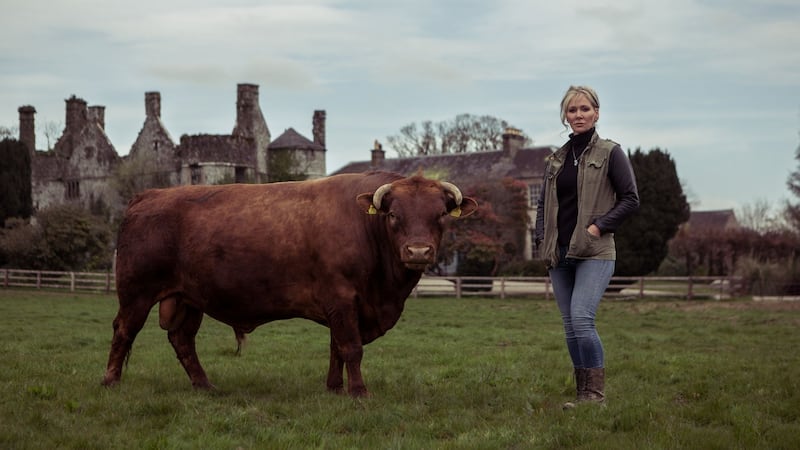
She was given hope when international visitors were “blown away” by the story of survival of a near-extinct bovine breed. She ploughed all her money into the project. “I found a community of beef farmers that are just disenfranchised. They were totally broke and they were depressed. Farmers were ringing me just for the chat, and I was talking them off the window ledge.
“There’s a handful of really powerful people in the beef industry. The problem is they have been allowed to develop this cartel, and there’s no way now this cartel is going to be broken down.”
She has become a Dexter beef producers’ hub. “I would really encourage beef farmers to come to us. Come to me with one Dexter and I can offer you €5 per kilo on the kill-out weight per animal... All going well with the Hong Kong guy, I could pay €7 a kilo to auxiliary producers with small herds.”
Her herd is now 800 Dexter cattle, spread across seven local farms. The hides are being sent to Italy to be turned into handbags. Every part of the animal is used, which makes all the difference when the animal is only a third of the weight of the larger continental breeds more commonly used for beef.
“We’re commanding the highest price for beef in Ireland, way beyond the €3.50 per kilo the factories are paying. And we’ve just started selling into Hong Kong and Macao. They’re paying double what we get here.”
They call it Irish wagyu, she says. “For me, as an artist, it’s like a living piece of art. I want everybody to gain from this. I don’t own the Dexter breed. Like the castle, I’m only the current custodian. And I want to leave the breed in a great situation after I’m gone.”
Rebalancing the system
Producers like Carmody are still seen as the exception rather than the rule of Irish agriculture. Less than 1.5 per cent of Irish agricultural land is farmed organically, and regenerative systems that are less intense have yet to be valued for their long-term benefits.
The Eat-Lancet report could provide a healthier direction, put us on the win-win side of the balance sheet, the Green Party's spokeswoman on agriculture, Pippa Hackett, said in reaction to the study. "This is not just about climate change, it is about changing ecosystems, biodiversity, soils, water quality and air quality. Ireland has a fantastic opportunity to lead on this. If world food-consumption habits result in a reduction of beef and dairy intake, then the 'less but better' approach can work really well here."
We need to consider what number of cows are appropriate. Should they be uneconomic beef cows or economic dairy cows? Maybe we're not mature enough for that debate
Mike Magan, a Longford dairy farmer, is keen to take the heat out of the arguments. A death match between vegans and Irish livestock farmers is not helping anyone, and the starting point of “cows are the problem” won’t help turn around a very large ship.
“We do need to consider what number of cows are appropriate. Should they be uneconomic, inefficient beef cows or economic dairy cows? But maybe we’re not mature enough to have that debate,” he says. Our beef farmers are “now competing with large feedlots in the States”. So what about rebalancing the system towards the high-end beef market, which was abandoned so quickly in the race to grain-finish cattle in order to feed the processor system?
“They’re classic niche,” Magan says, “like the Cashel Blue of the dairy scene. Small niche players will always perform. But can you convert that to an industry?”
On paper today, the dairy industry looks robust. Farm incomes among the State’s 13,000 dairy farmers average about €80,000, compared to just €30,000 on non-dairy farms. But can heavily borrowed, expanded dairy farmers weather more extreme climate change? Something “big has happened”, Magan concedes. “Many cows are out at the moment. Cows out in January is extraordinary. Could you have cows out in January and indoors in July?” And will taxpayers want to subsidise farmers when emissions fines are imposed for our failure to reach climate targets?

I debated the dairy industry with Magan in September, in a talk whose title was with the deliberately provocative question “Will dairy be the death of us?”, as part of the Fumbally Eat-It series. He joked afterwards that each time he got the bucket half-full, like an ornery cow I kicked it over and he would have to start again.
The Longford dairy farmer won the room, and the difficult cow lost. But much common ground was covered. Days later the Intergovernmental Panel on Climate Change warned that the world has only 12 years to avert catastrophic climate change. In the absence of a joined-up global effort, our children will come of age in a dangerously unstable world.
Shortly after that, the World Wildlife Fund highlighted the 60 per cent decline in populations of birds, mammals, fish and amphibians. Old certainties burned off like floodwater followed by a heatwave. Being a difficult cow might have to become the new normal. And the bucket that is the relentless expansion of Irish livestock farming will have to be kicked around a good deal more. Heavy weather lies ahead, whatever the seasons bring.
WHAT SHOULD I EAT? A CHEF’S TAKE
As a younger generation moves towards a diet with a reduced focus on meat, some Irish meat lovers reacted badly to the suggestion that less might be more.
"The backlash against the Lancet study is kind of understandable," Conor Spacey, a chef, says. "But it depends on which way you read it. It could have come across better. This is a planetary diet, an example rather than a set of rules. The end goal is to make food available for everybody and end world hunger."
Spacey runs Food Space, a contract catering company aiming for zero food waste and sourcing ingredients for a network of 20 kitchens from within 80km of each kitchen.
"I'm not a vegetarian or a vegan, but I enjoy plant-based foods," Spacey says. He's part of Chef's Manifesto, an international group of chefs that drew up eight guiding themes based on the UN's Sustainable Development Goals. These are:
– Ingredients grown with respect for the earth and its oceans
– Protection of biodiversity and improved animal welfare
– Investment in livelihoods
– Value natural resources and reduce waste
– Celebration of local and seasonal food
– A focus on plant-based ingredients
– Education on food safety, healthy diets and nutritious cooking
– Nutritious food that is accessible and affordable for all
On Friday, February 15th, Spacey will be cooking in Rome for 600 guests, basing the menu on the Eat-Lancet findings. After sourcing his ingredients in Italy, he will serve delegates:
– Butternut-squash and kale casserole with roasted almonds
– Gilthead bream with red-lentil dhal and spinach
– Tabbouleh made with amaranth grain
– Amalfi lemon polenta cake




